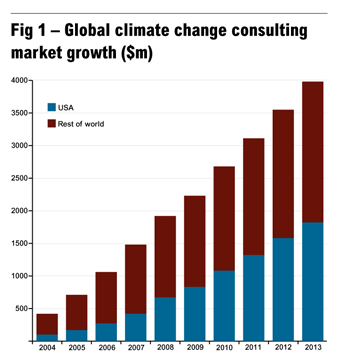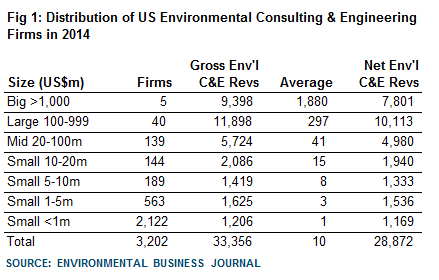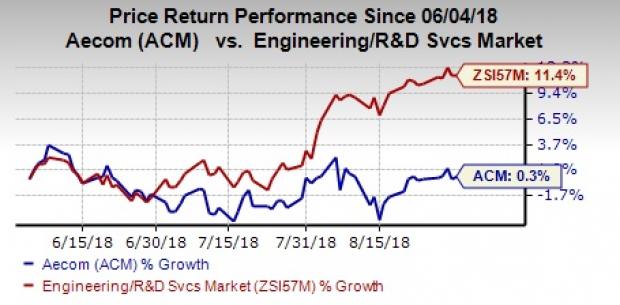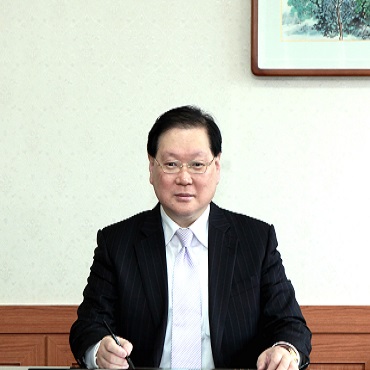
Environmental Science 2019

Theme: Integrative approach towards environmental challenges
A grand welcome to the participants from all over the world to exchange their views towards nature and who served for nature to the 5th World Congress on Environmental Science scheduled in Toronto, Canada during August 19-20, 2019. Enormous arrangements are done for plenary lectures, keynote talks, courses by eminent personalities from around the world in addition to poster presentations, young researcher sessions, symposiums, workshops, and Exhibitions with the theme: “Integrative Approach towards Environmental Challenges” to realize ample opportunities for resolving the challenges. The environment is massive and Environmental Science Conference is covering all the major and minor topics like Ecology, Plant Science, Zoology, Climate Change, Mineralogy, Oceanology, Soil Science, Geology, Physical Geography, Atmospheric Science, and Earth Science. The challenges we are facing now like Air, Water, Soil, Noise and Thermal Pollution, Climate Change and many more while advanced technologies and basic knowledge are considerable to heal these environmental challenges. So, Environmental Science Conference is also covering technologies like green technology, renewable energy, water, and air purification, sewage treatment, bioremediation, solid waste management, and e-waste management. Environmental Science Conference will definitely offer all participants an unforgettable experience in analyzing new probabilities. Hope, this world congress be a grand success in Toronto, Canada.
“Join us and put a step forward to make our earth green”.
Session 1: Ecosystem & Ecology
Ecosystem & Ecology maintain the high quality and economic use of natural products, energies by examining the interaction between environmental components. The principles of ecology can help in predicting, extinguishing and neutralizing the potential adverse effects on globe around us. An ecosystem can be determined by various parent materials like soil, water, air, topography but the conservation of the ecosystem can be human-made.
Environmental Science Conferences | Ecology Events | Climate Change Actions | Biodiversity and Conservation Programs | Environmental Science Symposiums | Ecology Workshops | Environmental Science Meetings | Environmental Science Congress | Environmental Chemistry Meetings | Environmental Engineering Congress | Environmental Engineering Workshops | Climate Change Conferences | Conservation of Renewable Resources workshops | Biodiversity and Conservation Congress | Climate Change Workshops | Environmental Design Symposiums
Session 2: Environmental Pollution & Control
Addition of any physical and biological contaminants in the environment makes the pollution rate faster. Anthropogenic contaminants have a huge role in it with some involvement of natural disasters. Mostly seven types of pollutions are classified, which can be dissipated, weakened, decomposed, recycled and stored in a harmless manner, towards the betterment of the humankind. Core processes and their outputs, identifying the significant component of environmental pollution and their impacts, maintaining awareness and legal requirements may lead towards a green future.
Environmental Science Conferences | Ecology Events | Climate Change Actions | Biodiversity and Conservation Programs | Environmental Science Symposiums | Ecology Workshops | Environmental Science Meetings | Environmental Science Congress | Environmental Chemistry Meetings | Environmental Engineering Congress | Environmental Engineering Workshops | Climate Change Conferences | Conservation of Renewable Resources workshops |Biodiversity and Conservation Congress | Climate Change Workshops| Environmental Design Symposiums
Session 3: Environmental Chemistry & Engineering
Many manmade activities have a direct impact on the chemical composition of the organisms in the environment. Environmental Chemistry investigates the effects of those hazardous chemical effects on natural products. Analytical chemistry may help in resolving the problems in Environmental Chemistry by using analytical methods. The health of a person is the mirror of the quality of the environment. Environmental engineering helps us in applying the scientific approach of the engineering principle to fight against the adverse effect of the polluted environmental factors.
Environmental Science Conferences | Ecology Events | Climate Change Actions | Biodiversity and Conservation Programs | Environmental Science Symposiums | Ecology Workshops | Environmental Science Meetings | Environmental Science Congress | Environmental Chemistry Meetings | Environmental Engineering Congress | Environmental Engineering Workshops | Climate Change Conferences | Conservation of Renewable Resources workshops |Biodiversity and Conservation Congress | Climate Change Workshops| Environmental Design Symposiums
Session 4:Biodiversity & Conservation
Variation among the living organisms in a genetic and species level in the ecosystem causes a balanced food chain. Biodiversity is being very important to all organisms as they need food to survive first along with that it has great economic value in the market because of various natural goods. In the environment, everything is connected and biodiversity is the essential connecting link between the environment and organisms. Till now many protocols have been accepted to conserve the greatest support of the environment. Along with legal methods all the in situ and ex situ conservation methods, national parks, sanctuaries have been made to maintain the perfect balance.
Environmental Science Conferences | Ecology Events | Climate Change Actions | Biodiversity and Conservation Programs | Environmental Science Symposiums | Ecology Workshops | Environmental Science Meetings | Environmental Science Congress | Environmental Chemistry Meetings | Environmental Engineering Congress | Environmental Engineering Workshops | Climate Change Conferences | Conservation of Renewable Resources workshops |Biodiversity and Conservation Congress | Climate Change Workshops| Environmental Design Symposiums
Session 5: Bioremediation & Solid Waste Management
Bioremediation is one of the important processes to reduce and neutralize the waste from the environment by using various organisms by oxidation-reduction methods. Without using the chemicals, only bacteria, fungi, protists, and other microorganisms can heal and neutralize the waste. The in-situ and ex-situ process of bioremediation refers to the treatments of the waste at its origin and after being removed from the original area. The only limitation in bioremediation is not to neutralize the contamination of heavy metals in the wastes because of the metabolic pathways of the microorganisms.
Environmental Science Conferences | Ecology Events | Climate Change Actions | Biodiversity and Conservation Programs | Environmental Science Symposiums | Ecology Workshops | Environmental Science Meetings | Environmental Science Congress | Environmental Chemistry Meetings | Environmental Engineering Congress | Environmental Engineering Workshops | Climate Change Conferences | Conservation of Renewable Resources workshops |Biodiversity and Conservation Congress | Climate Change Workshops| Environmental Design Symposiums
Session 6: Climate Change
The changes in weather patterns take decades and stay up to millions of years and it can be calculated in a statistical way. The time variation in between weather conditions is a longer-term average condition. Factors that can shape the climate are called as “Climate forcings”. It can be internal or external. Internal force mechanisms are the natural processes and the external force mechanisms may like anthropogenic activities.
Environmental Science Conferences | Ecology Events | Climate Change Actions | Biodiversity and Conservation Programs | Environmental Science Symposiums | Ecology Workshops | Environmental Science Meetings | Environmental Science Congress | Environmental Chemistry Meetings | Environmental Engineering Congress | Environmental Engineering Workshops | Climate Change Conferences | Conservation of Renewable Resources workshops |Biodiversity and Conservation Congress | Climate Change Workshops| Environmental Design Symposiums
Session 7: Renewable Energy & Resources
The geographic area of the earth is filled with renewable energy, which is also called green energy as it comes completely from nature. Renewable energy has the power to boost up the poorest country to new prosperous country. Wind power, geothermal power, solar energy etc. has the capacity to take the energy power to a new level and the market is in trend nowadays as it gives 100% back up to the non-renewable energy resources.
Environmental Science Conferences | Ecology Events | Climate Change Actions | Biodiversity and Conservation Programs | Environmental Science Symposiums | Ecology Workshops | Environmental Science Meetings | Environmental Science Congress | Environmental Chemistry Meetings | Environmental Engineering Congress | Environmental Engineering Workshops | Climate Change Conferences | Conservation of Renewable Resources workshops |Biodiversity and Conservation Congress | Climate Change Workshops| Environmental Design Symposiums
Session 8:Carbon capture & Sequestration
Carbon is the ultimate source of the ecosystem to making it grow day by day mainly because of its involvement in photosynthesis. Carbon is important before making a bond with any other element. Carbon capture is likely to reduce the amount the CO2 from the atmosphere before being a large point source for pollution. Carbon capture and sequestration cause enrichment of the soil by adding many more amount of carbon to the soil before releasing it to the atmosphere. Generally, carbon capture and sequestration process involve soil and ocean to store a high rate of carbon amount.
Environmental Science Conferences | Ecology Events | Climate Change Actions | Biodiversity and Conservation Programs | Environmental Science Symposiums | Ecology Workshops | Environmental Science Meetings | Environmental Science Congress | Environmental Chemistry Meetings | Environmental Engineering Congress | Environmental Engineering Workshops | Climate Change Conferences | Conservation of Renewable Resources workshops |Biodiversity and Conservation Congress | Climate Change Workshops| Environmental Design Symposiums
Session 9: E-Waste and plastic pollution management
Technology and nature both are inversely proportional. In some cases, technology helps to rebuild nature but mostly for mankind’s development environment is being polluted. This technology gives us tons of garbage of waste electronic devices of which recycling is quite difficult. For radioactive elements to heavy metals, the air, soil, wind, water all are being polluted with this. Nowadays e-waste management should grab the global attention and market should invest more time and money to make the earth e- garbage free.
Polyvinyl chloride (PVC) is mainly found in the plastic components of electrical and electronic equipment. When burned, PVC releases harmful dioxins, furans and phthalates, which are known carcinogens and reproductive toxicants. Hence we have to say NO to plastic.
Environmental Science Conferences | Ecology Events | Climate Change Actions | Biodiversity and Conservation Programs | Environmental Science Symposiums | Ecology Workshops | Environmental Science Meetings | Environmental Science Congress | Environmental Chemistry Meetings | Environmental Engineering Congress | Environmental Engineering Workshops | Climate Change Conferences | Conservation of Renewable Resources workshops |Biodiversity and Conservation Congress | Climate Change Workshops| Environmental Design Symposiums
Session 10: Environment & Health Safety
To avoid all these kind of pollutions and problems discussed above we should follow some rules for safety. Awareness among people, showing practical aspects of environmental pollution, creating a proper balance between technology and nature may help to create a better earth tomorrow. For the safety of the health and for diluting the pollution of the environment some regulatory agencies are made with some disciplined rules to follow. Still, awareness is must be needed in local area basis to avoid future troubles.
Environmental Science Conferences | Ecology Events | Climate Change Actions | Biodiversity and Conservation Programs | Environmental Science Symposiums | Ecology Workshops | Environmental Science Meetings | Environmental Science Congress | Environmental Chemistry Meetings | Environmental Engineering Congress | Environmental Engineering Workshops | Climate Change Conferences | Conservation of Renewable Resources workshops |Biodiversity and Conservation Congress | Climate Change Workshops| Environmental Design Symposiums
Session 11:Ecosystem Management & Designing
A proper management process may heal and lower the destruction rate in the environment. Create ecological boundaries, connecting different levels of biodiversity; invent new ideas to resolve the current situation and problem, maintain the population growth in a pattern, experiment with different designs and models to make all this work: these are some of the ideas and recent methods which are being taken up by many of the countries to face this situation together.
Environmental Science Conferences | Ecology Events | Climate Change Actions | Biodiversity and Conservation Programs | Environmental Science Symposiums | Ecology Workshops | Environmental Science Meetings | Environmental Science Congress | Environmental Chemistry Meetings | Environmental Engineering Congress | Environmental Engineering Workshops | Climate Change Conferences | Conservation of Renewable Resources workshops |Biodiversity and Conservation Congress | Climate Change Workshops| Environmental Design Symposiums
Session 12: Environment Protection Laws
Laws must be implemented to regulate these theories to action. Several treaties, statutes, regulations, common and customary laws are made by the governments of individual nations. Rehearsing the key concepts and guidelines and responding to emerging awareness programs is the best way to implement these laws in daily life to make it healthy and worthy.
Environmental Science Conferences | Ecology Events | Climate Change Actions | Biodiversity and Conservation Programs | Environmental Science Symposiums | Ecology Workshops | Environmental Science Meetings | Environmental Science Congress | Environmental Chemistry Meetings | Environmental Engineering Congress | Environmental Engineering Workshops | Climate Change Conferences | Conservation of Renewable Resources workshops |Biodiversity and Conservation Congress | Climate Change Workshops| Environmental Design Symposiums
Environmental Science Market Analysis:
The prediction of the market value of environmental science can be done by estimating the environmental valuation or putting monetary efforts in environmental goods and services. Spending money on biodiversity, coral reefs, mountains, endangered animals, deforestation etc., it may include some indirect processes like erosion control, carbon sequestration, conservation of the ecosystem and the genetic materials, which will give us a tremendous growth in future in terms of balanced ecosystem.
Importance and Scope of Environmental Science:
Humans are living in nature and by nature, but the whole ecosystem is devastated while the human is improving their lifestyle. Environmental Science has lots of scope like studying the nutrient flow pattern and the releasing energy and its impact on the ecosystem. It can deal with nature and its function. By letting people know more about the problems joined with the environment it can be reduced or resolved up to some extent. Mostly our ecosystem is hampered by air pollution, soil pollution & many more, but CO2 emission is the most in all these pollution. Environmental Science 2019 congress will give a broad idea about all together pollution, and its treatment along with technologies involved with environmental science.

Market involved with Environmental Science:
Only traditional methods and analysis are not enough to face this problem, so applied technologies are needed, which need to be developed yet harmless to the environment. Environmental chemistry, environmental engineering, models, designs are being made to help the traditional methods. In these modern eras, due to development of many more industries, this environmental engineering is rapidly growing in countries like Asia, South America, Eastern Europe, and Africa. Some common problems, they are focusing on wastewater disposal, air quality control, solid waste and e-waste management, soil, water, air testing etc. It also includes industrial hygiene, radiations, noise pollution too.
As per the latest research, the market analysis in environmental engineering the industry growth and the money spent is 2% to 4% in Eastern Europe, Latin America, Asia, and Africa, whereas in the USA it is from 2% to 3% because of the advancement in the lifestyle among human beings.

There are many more environmental consulting firms present who are investing a huge amount for the betterment of the environment. Those companies are recognized as “Global 23” and shared 44% of the total global market in 2014. The top three companies are AECOM, CH2M, Tetra Tech. Their market share is 4.5% among total market shares.

AECOM is the latest global market leader generating US$4 billion from environmental consulting and engineering.

Associations & Funding Agencies for Environmental Science Research:
Environmental Science is an emerging and eye-catching topic to research, for which many government and private agencies along with associations are interested in funding the scientists, researchers, ecologists for a growth and development towards a novel approach.
• Consultative Group for International Agricultural Research, France
• US Department of Energy, USA
• Earth Watch Institute, USA
• Environmental Protection Agency, USA
• Humboldt Foundation,Germany
• National Institute of Health, USA
• National Science Foundation, USA
• The Nature Conservancy, USA
• Environmental Defence Fund, USA
• Conservation International, USA
• National Audubon Society, USA
• Inter-Tribal Environmental Council, USA
• European Commission, Belgium
• British Ecological Society, UK
• European Foundation Centre, Belgium
• Wellcome Trust, UK
• Engineering and Physical Sciences Research Council, UK
• Research Councils, UK
• Ministry of Environment, Forest and Climate Change, India
• Tata Institute of Fundamental Research, India
• Ministry of Earth Science, India
• Centre for Science and Environment, India
Universities Associated with Environmental Science:
• University of California, USA
• Stanford University, USA
• Massachusetts Institute of Technology, USA
• Harvard University, USA
• University of Oxford, UK
• ETH Zurich, Switzerland
• University of Cambridge, UK
• Wageningen University, Netherlands
• Imperial College London, UK
• National University of Singapore, Singapore
• University of British Columbia, Canada
• The University of Queensland, Australia
• Delft University of Technology, Netherlands
• The University of New South Wales, Australia
• The University of Tokyo, Japan
• Tsinghua University, China
• Stockholm University, Sweden
• Lund University, Sweden
• Indian Institute of Science, India
• India Institute of Technology, India
Environmental Science Companies Worldwide:
• AECOM, USA
• CH2M, USA
• HDR Inc, USA
• Jacobs, USA
• Bechtel, USA
• Tetra Tech Inc, USA
• Atkins, UK
• Worley Parsons, Australia
• Stantec, Canada
• ICF International, USA
References:
https://www.aecom.com/markets/
https://www.edf.org/
http://www.economywatch.com/world-industries/engineering/environmental.html
https://www.nature.org/en-us/
http://envfor.nic.in/
- Ecosystem & Ecology
- Environmental Pollution & Control
- Environmental Chemistry & Engineering
- Biodiversity & Conservation
- Bioremediation & Solid Waste Management
- Climate Change
- Renewable Energy & Resources
- Carbon Capture & Sequestration
- E-Waste and plastic pollution management
- Environment & Health Safety
- Ecosystem Management & Designing
- Environment Protection Laws
- Expert Opinion on Environmental Biology
- Journal of Biodiversity Management & Forestry
- Journal of Soil Science & Plant Health
4 Organizing Committee Members
4 Renowned Speakers
Madhav Khandekar
Environment Canada
Canada
Sheetal Sharma
LNCT University
India
Nikole Belanger
Green Schools Green Future
Canada
Latifa Shaheen Al-Naimi
Qatar University
Qatar































































































































